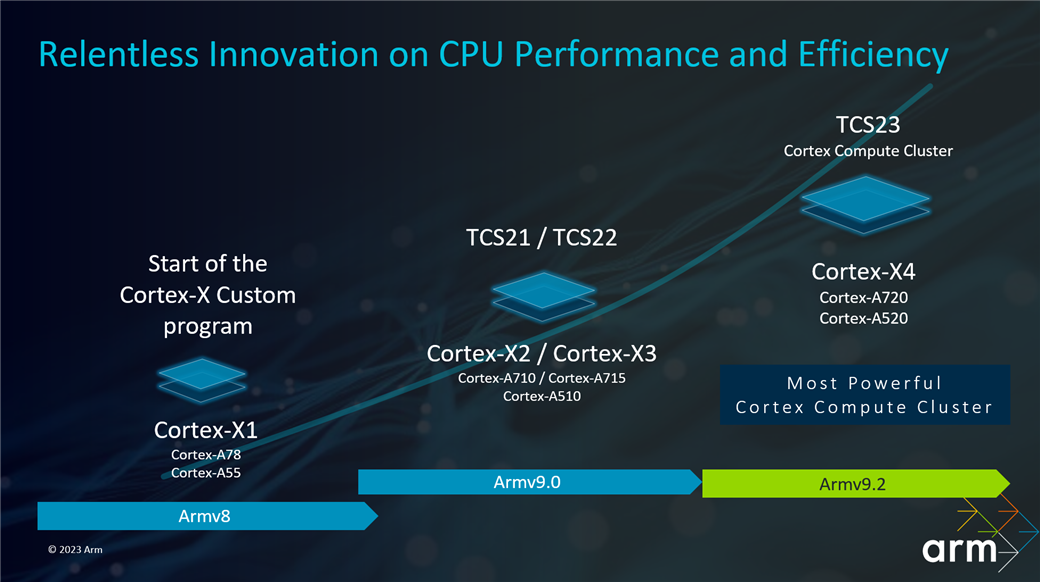Arm is the leading force in microprocessor technology for mobile phones, providing a wide variety of cores to meet the performance, power, and cost requirements of many application areas. It has just announced the latest TCS23 mobile computing with Cortex-X4, A720, and A520 clusters at the ongoing Computex 2023.
Arm TCS23 Compute Clusters
It's essential to understand the latest Cortex-X4, A720, and A520's lineage in order to fully comprehend its features and capabilities. Each successive Cortex-X family member has further improved CPU efficiency and performance while working in a low-power range. The latest Cortex cores also continue this pattern. The Cortex-X4 is the high-performance core, the Cortex-A720 is responsible for mid-range operations, and the Cortex-A520 is responsible for power efficiency.Cortex-X4
The Cortex-X4, ARM's fastest CPU core, provides an impressive performance boost over last year's Cortex X3. It outperforms the competition by 15% while using the same amount of energy. Added to that, the Cortex-X4 offers a significant 40% reduction in power utilization for the same level of performance. It has a clock frequency of 3.4 GHz.Cortex-A720
The Cortex-A720 aims to be even more efficient than its predecessors, the A715 and A710 cores. It improves efficiency by 20% over the A715, which was already 20% more efficient than the A710. They can efficiently address complicated tasks which require processing numerous threads simultaneously while using five A720 cores. The A720 has a clock speed that ranges from 2.5 to 3 GHz.Cortex-A520
The Cortex-A520 saves space in the die by allowing two cores to share execution units. A further important objective was to reduce power usage, ultimately resulting in the A520 being 22% more efficient than the A510. This core is not meant for resource-heavy tasks but for routine background tasks. They have clock speeds ranging from 1.5 GHz to 2.0 GHz.
- You may also like:
Performance and Efficiency of Cortex
Arm clients can modify the chipsets to meet their individual needs and power requirements. While the standard configuration consists of one Cortex-X4, three A720s, and four A520s cores, some may choose a different arrangement, such as 1+5+2. This decision is influenced by expected workloads and power limits. A new chipset with Cortex-X4, A720, and A520 cores in a 1+5+2 configuration achieves a 27% performance gain on Geekbench 6's multi-threaded test. This is an improvement over the present combination of Cortex-X3, A716, and A510 CPUs (1+3+4) running at the same frequency and storage. It's worth noting that these performance gains are achieved before taking into account the benefits of a new chip's technological advancements.It is crucial to note that the Cortex-X4, A720, and A520 cores do not support the prior 32-bit ARM instruction set. ARM specifically designs them for the ARMv9 instruction set. However, the Cortex-A710 core is available for firms that still require a 32-bit function.- Meanwhile, check out our comparison between Snapdragon 8 Gen 2, A16 Bionic and Dimensity 9200.

To say something about myself, I have been writing tech and gadgets from 2021. Although coming from a non technical studies background, I'm someone who is always fascinated by the latest gadget and tech innovations, circling around. Besides writing, you'll find me listening music and aligning the stars through astrology and sometimes even, tarot cards! 😉🧿
Comments
No comments yet. Add a comment to start a discussion





